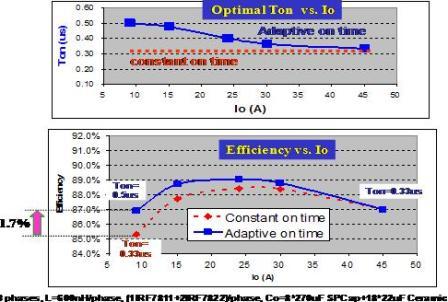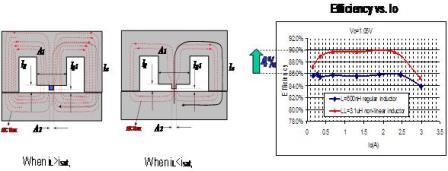RESEARCH
Light Load Efficiency Improvement for Laptop VRs (2004)

(1) Adaptive on time control to improve CCM efficiency
At CCM operation, we find out that there exists an optimal on time for top switch to achieve lowest power losses for a given load current. Different load current results in different optimal on time. So adaptive on time control which varies on time with load current information is proposed to improve CCM efficiency of Buck converter. The experimental result shows that by applying adaptive on time control, CCM efficiency can be improved up to 1.7%.
(2) Non-linear inductor to improve DCM efficiency
At CPU active state, since fast transient exists, VR should also have fast response to meet the transient requirement. As a result, small inductance is required to meet the transient requirement at active state. However, at light load, since there is no stringent transient requirement, large inductance is preferred for light load efficiency. The proposed simple structure to achieve the above non-linear inductor is to use saturable core, as shown in Figure 2.When inductance current is larger than the given saturation current (Isat), the small part of the core is saturated to achieve small inductance. The experimental results show that by using non-linear inductor, DCM efficiency can be improved up to 4%.























































































